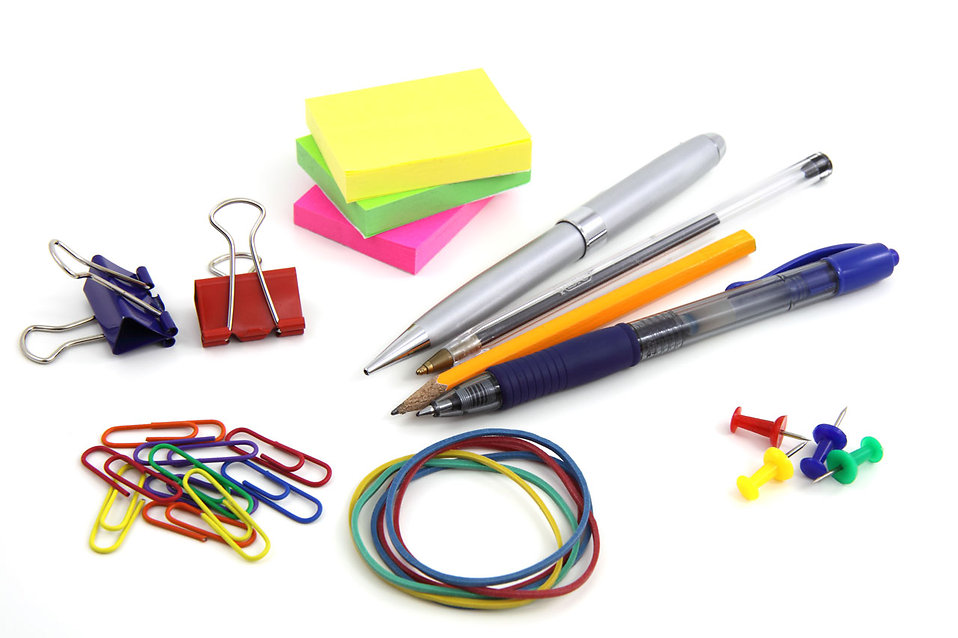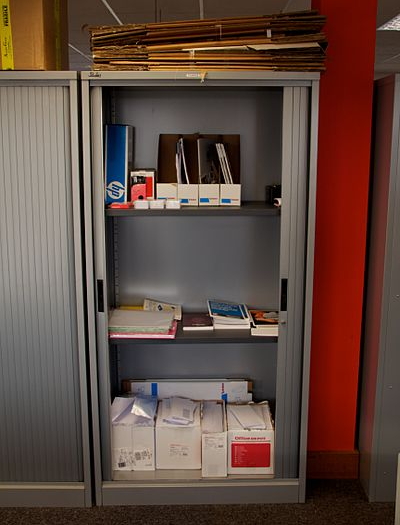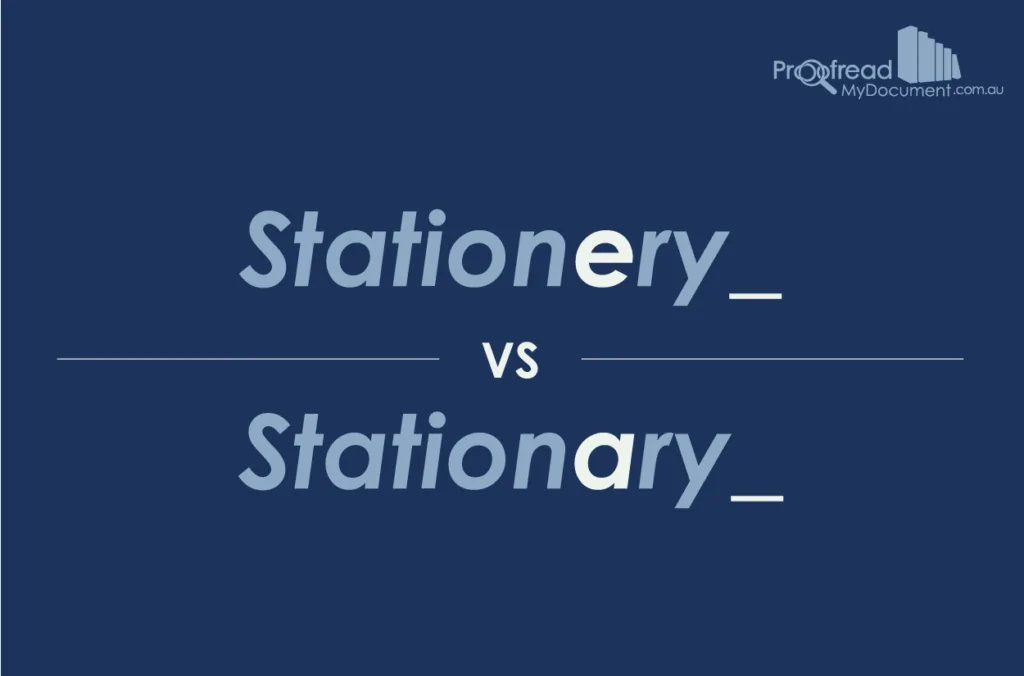If a cupboard is full of pencils and lacks wheels, it’s both ‘a stationery cupboard’ and ‘a stationary cupboard’. And if that statement isn’t confusing enough, the fact that these terms are similar in spelling and pronunciation certainly causes a few mix ups.
But since clarity in writing is important, knowing how to use each term correctly is a good idea. In this post, we explain the difference.
Stationery (Writing Equipment)
The term ‘stationery’ means ‘writing equipment’ or ‘office supplies’ (basically, the kind of stuff you can buy at Staples). We’d therefore use it in a sentence such as the following:
I’m writing a thank you note with the stationery set I got for Christmas.
As suggested in the opening paragraph, the cupboard in the office/classroom where all of the writing and office supplies are kept is a ‘stationery cupboard’.

(Photo: Petr Kratochvil)
Stationary (Not Moving)
‘Stationary’ means ‘not moving’ or ‘immobile’. This could be either permanent (like the ‘stationary bikes’ used in a spinning class) or simply not currently in motion:
While the lights were red at the crossing, the cars remained stationary.
Find this useful?
Subscribe to our newsletter and get writing tips from our editors straight to your inbox.
It can also be used figuratively to describe measurements or numerical values that remain steady over a period of time, like in the following:
Sales of exercise bikes have been stationary over the past decade.
Cupboards, of course, don’t usually move. Thus, if someone refers to a ‘stationary cupboard’, while there’s a chance they’re remarking on its immobility, they probably mean ‘stationery’.

(Photo: Mike Peel/wikimedia)
Stationery or Stationary?
These words are very different in meaning, so the key is knowing how each is spelled. One tip here is that ‘stationery’ includes ‘paper’, and that both of these are spelled with ‘er’. Remember:
Stationery = Office supplies
Stationary = Not moving



